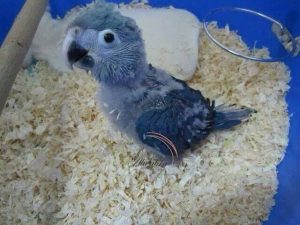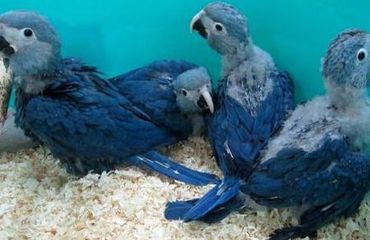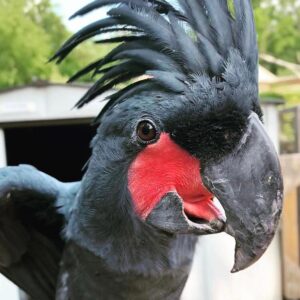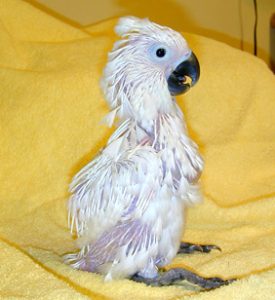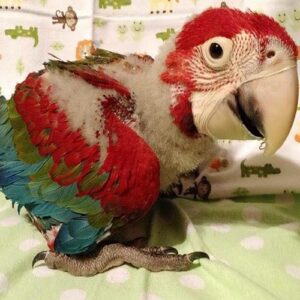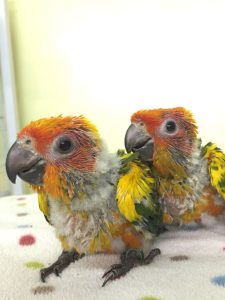We have chicks available from 9 weeks upward. Let us know the age you willing to purchase.
Diet
The feeding of these birds was determined by their preferences as follows. Mainly as a morning greeting I give them a small piece of lean, coarse-grained beef, which I supplement from time to time with a drop of a multi-vitamin supplement and/or calcium-vitamin D3. Later in the day I provide different types of fruit or berries. They particularly like the fruit of the dog rose (Rosa canina) – rose hips. All other food is disdained if it is offered and they even lose their aggression towards the keeper when feeding on them. They should not be offered too much during the breeding season.
I lost a clutch once years ago because of it. The more the small blue macaw feeds on the rose-hips the more left-over sticks on and around the beak. Outside the breeding season the birds take time to clean their beaks, but during it after feeding on these delicacies the female rushes to get back on the eggs.
If it turns the eggs with the sticky beak, they gradually get covered and the embryos die as a result of restricted exchange of gases. The fruit of the rowan or mountain ash (Sorbus aucuparia) is likewise a favourite food. It can, like the rose-hips, be stored deep frozen without loss of vitamins. If other fruit is offered the Cyanopsittae are only interested in the seeds and disdain the flesh. Milky maize can also be deep-frozen and will be gladly eaten seasonally as a change. I use it also as a vehicle for medication, particularly worming remedies in so far the very robust Spix’s macaws need it at all.Baby Spix’s Macaws
The Spix’s Macaw, also known as the Little Blue Macaw, is an incredibly rare and striking parrot species native to Brazil. Renowned for its stunning blue plumage, this majestic bird stands out as one of the most visually captivating members of the macaw family. Its vibrant blue feathers, tinged with lighter shades and accented by a distinctive facial mask, make it instantly recognizable.
Spix’s Macaws are known for their intelligence, agility, and strong personalities. Despite their beauty, they are also one of the most critically endangered parrot species in the world, with only a handful remaining in the wild. Efforts to conserve and protect this species have been ongoing, including breeding programs aimed at bolstering their population.
In addition to their striking appearance, Spix’s Macaws are known for their curious and social nature. They form strong bonds with their human caregivers and enjoy interactive play and mental stimulation. However, they can also be sensitive birds, requiring gentle handling and a supportive environment to thrive.
Despite the challenges facing this species, the Spix’s Macaw remains a symbol of hope for conservation efforts worldwide. With continued dedication and conservation initiatives, it is hoped that this magnificent bird will once again grace the skies of its native Brazil.
